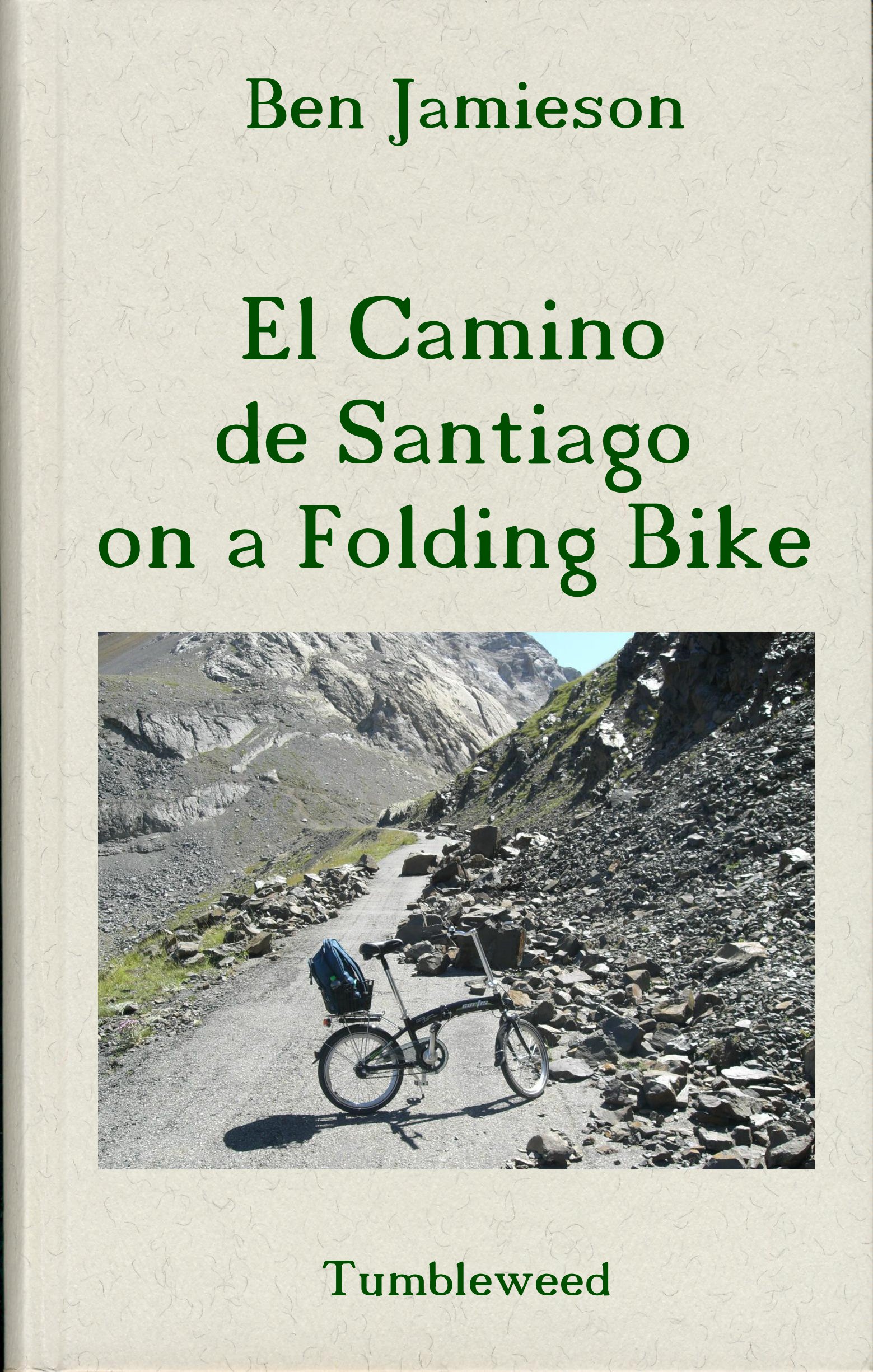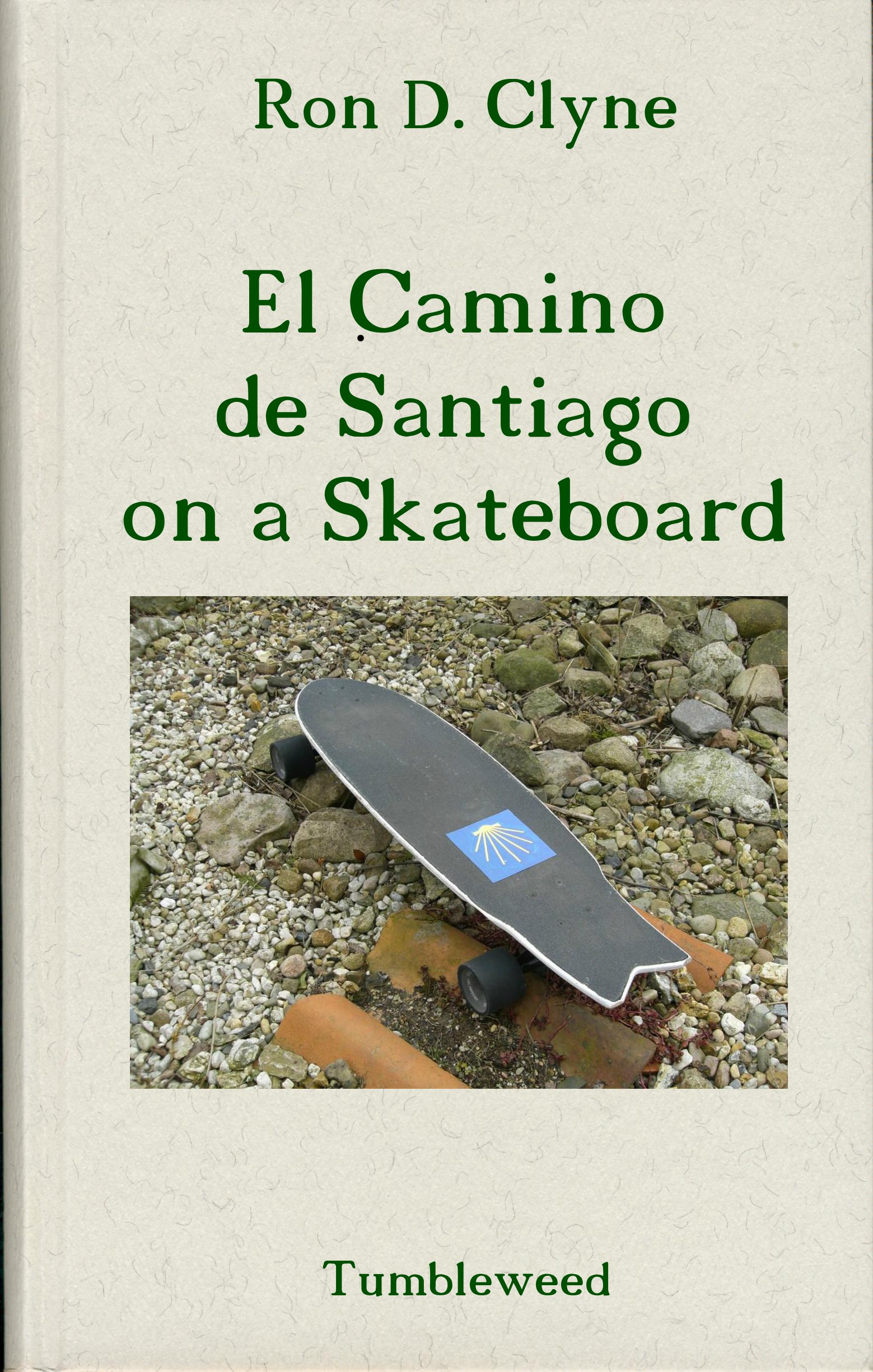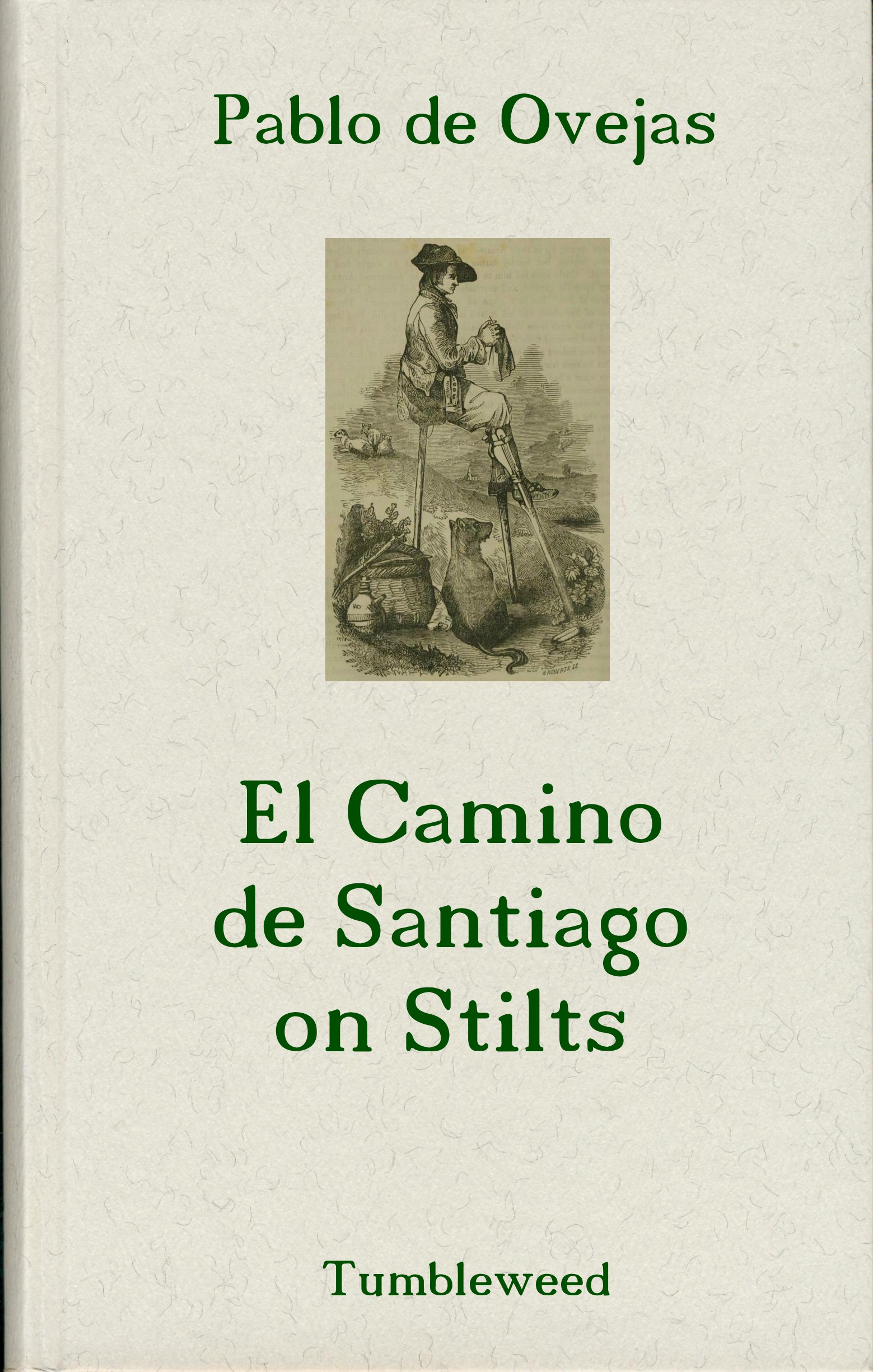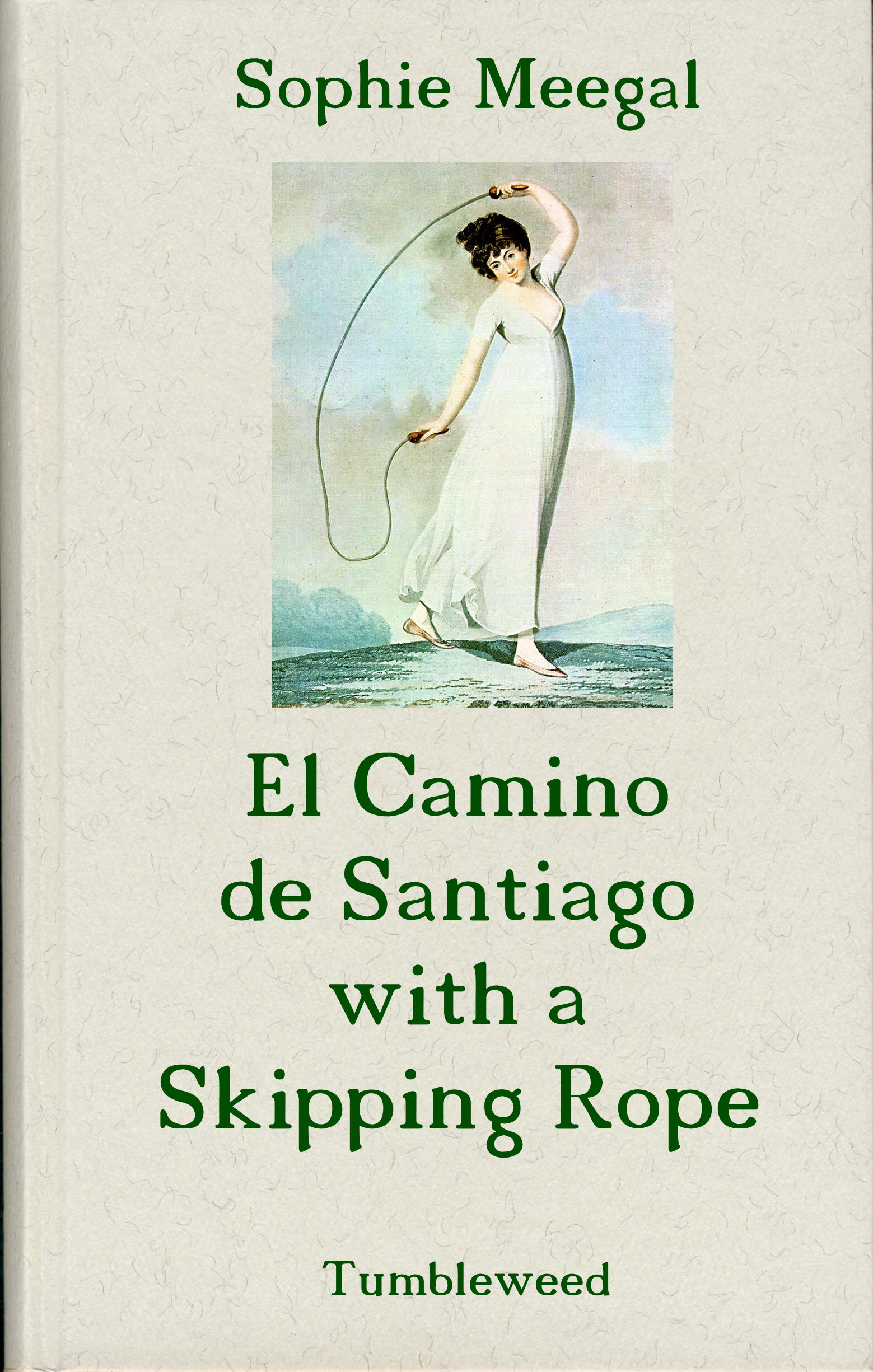|
Ron D. Clyne's El Camino de Santiago on a Skateboard
is the second volume in the Buon Camino Series published
by Tumbleweed, following the Pulitzer Prize winning El Camino de
Santiago on a Folding Bike, written by Ben Jamieson.
You might ask yourself: Why would a basically sane person attempt to go
on the 800 km Way of St. Frances on a skateboard? Clyne answers that
question himself in his introduction: "I had never even stood on a
skateboard before in my life. In fact, the only thing I knew about
skateboards was that they had been invented by Marty McFly a.k.a.
Michael J. Fox in my favorite movie Back to the Future. However,
when I told my son Kevin that I wanted to fly to Spain and go on this
pilgrimage, he said, 'Jeez Dad, you gotta do this on a board – it's way
more fun, and I betcha it's never been done before.'
I wasn't sure about the fun part, but I did know it had certainly never
been done before. The next thing I knew I was taking skateboard lessons
from Kevin, and believe me, that's a tough thing if you start doing it
at my age. Also, I was given a crash course in skateboard slang. Two
days later I was actually able to nail a cool lip grind on my deck,
which left Kevin speechless for a second or two; then he muttered, 'Dad,
that's sick. You're a natural.' "
Three months later Clyne arrived at Saint-Jean-Pied-de-Port in the
French Pyrenees, unpacked his rucksack and his skateboard (featuring St.
James's shell, the symbol of the pilgrimage route) and set off for
Santiago de Compostela. As the photo on the front cover suggests, the
going was often rather tough. Clyne boasts that on his way there he
busted various perfect Smith grinds, did countless Mongo switches and
also flipped the crapper numerous times. However, after arriving at
Santiago de Compostela only 3 weeks later he was so overjoyed that he
unsuccessfully attempted a lip grind on the pulpit rail in the famous
cathedral, which resulted in both him and the skateboard being thrown
out of the cathedral.
Clyne has a way of describing his epic journey in a very vivid,
delightful and entertaining way, the only drawback being the abundant
use of skateboard slang. Then again, there is an appendix comprising 68
pages in which all the terms are explained, including photos featuring
the author doing some of the stunning tricks himself.
***
Ron D. Clyne: El Camino de Santiago on a Skateboard
Tumbleweed, 2013. Hardcover, 436 pages, including 50 photos, 12
maps, an index and an appendix. $ 18.90
|
|
Pablo de Ovejas' El Camino de Santiago
on Stilts is the third volume in the Buon Camino Series
published by Tumbleweed, following El Camino de Santiago on a
Folding Bike and El Camino de Santiago on a Skateboard.
In contrast to its predecessors, this book is in fact a facsimile
reprint of the first edition which was published and translated into
English by one Miguel Toboso in 1855. Toboso seems to have been an English teacher in
Alcalá de Henares, though his grasp of the English language appears to
be somewhat limited. This may account for the fact that more often than
not his awkward style leaves a great deal to be desired. Then again, as
Charles Dickens pointed out, "Toboso's cumbersome and often stilted
syntax perfectly reflects the fact that Pablo de Ovejas was indeed using
stilts on his famous pilgrimage".
The book comprises 147 pages, including 17 original drawings. The
drawing on the front cover is taken from p. 28. It shows Pablo de Ovejas
resting on a kind of raised stool about 2 miles west of Santo Domingo de
la Calzada. Toboso's caption reads: "Pedro Gonzalez, Pablo's
trusty, and also watchful, canine fellow traveler, is guarding his
master's victuals, next to him, against rapacious sheeps [sic] in the
background, on a hill."
Of course one has to give Pablo de Ovejas credit: it is no mean feat to
successfully cover 800 km on stilts. To my knowledge this has never been
attempted before or afterwards. What's more, de Ovejas even claims that
he never once dismounted from his stilts. Apparently he slept at night
while sitting on his raised stool and leaning against the wall of some refugio.
***
Pablo de Ovejas: El Camino de Santiago on Stilts
Tumbleweed facsimile edition, 2013
147 pages, 17 drawings
$ 14.90
|
|
Sophie Meegal's El
Camino de Santiago with a Skipping Rope is the fourth volume in
the Buon Camino Series published by Tumbleweed, following El
Camino de Santiago on Stilts, El Camino de Santiago on a
Folding Bike and El Camino de Santiago on a Skateboard.
Sophie Meegal was born in Edinburgh on January 23, 1800. She had been
given a skipping rope on her second birthday and had been skipping
around the city ever since. It soon turned out she had a natural talent
for it; in fact, as a teenager she was often seen skipping school, too.
When she told her father on her 21st birthday that she intended to skip
all the way from Saint-Jean-Pied-de-Port in the French Pyrenees to
Santiago de Compostela in western Spain he was rather taken aback.
However, she mistakenly took his curt remark, "Oh, come on, Sophie
me gal, skip it!" as an encouragement, packed 64 skipping ropes and
immediately left for the Camino de Santiago.
The picture on the front cover shows Sophie on the fifth day of her
pilgrimage (cp. p. 28), skipping along on the Camino about 5 miles west
of Roncesvalles, a small Spanish village in the Pyrenees. "This is
a beautiful place," she wrote in her diary. "It reminds me a
wee bit of the glens in the Highlands my father would take me to when I
was a little girl. What's more, the skipping that was oh such a drag
yesterday is much easier today – mind you, it's almost as if I was
floating along."
Her journey turned out to be remarkably well planned: Having estimated
that she would use up one rope each day she arrived at Santiago de
Compostela after 63 days with just one rope left. She was introduced to
the Archbishop, who upon seeing the 63 frazzled ropes was moved to tears
and spontaneously consented to exhibit them in the famous Pórtico de
la Gloria behind the western façade of the cathedral. Even today
countless peregrinos flock there, though 45 of the ropes have
apparently been stolen by now.
According to the Guinness Book of Records this is the first and
only time that a person has successfully completed the Camino with a
skipping rope. (A recent attempt in 2012 by one Knot Reely, a retired DJ
from Liverpool, failed miserably. After 79 days Reely somehow managed to
get entangled in the rope a mere 20 feet from the cathedral, bumped his
head on a cobblestone and passed out.)
***
Sophie Meegal: El Camino de Santiago with a Skipping Rope
Tumbleweed, March 2013, facsimile reprint, hardcover
312 pages, with 24 original drawings; $ 19.50
|







